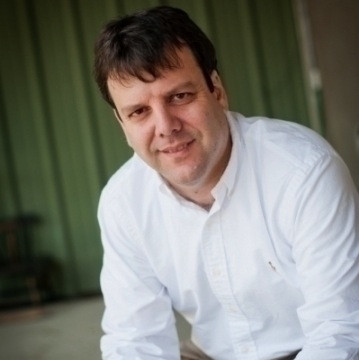Rob Horowitz: Important Climate Change Milestone Exceeded
Tuesday, May 14, 2013
The National Ocean & Atmospheric Administration (NOAA) delivered the bracing news last week that the daily mean concentration of heat-trapping carbon dioxide in the atmosphere exceeded 400 parts per million (ppm) at its measuring site in Mauna Loa, Hawaii.
According to NOAA, “The rate of increase has accelerated since the measures started from about 0.7 ppm per year in the late 50’s to 2.1 ppm per year during the last ten years.” This stepped-up accumulation of the greenhouse gas that is driving-up global temperatures restricts the time horizon for preventing a dangerous rise in global temperatures. Scientists believe that to limit temperature increases to a difficult, but still manageable 2 degrees Celsius, the percentage of carbon dioxide in the atmosphere must be kept under 450 ppm—a level that at the current rate of increase will be reached in less than 25 years.
The news that we are racing past this important climate change benchmark is a reminder that while there has been some progress, the current policy approach does not come close to matching the scale of the problem. Some observers argue that the inability to meet this challenge which poses a significant threat to our way of life is due to the fact that it is viewed through the wrong prism. Critics of the environmental movement’s approach to the problem such as Ted Nordhaus and Michael Schellenberger-- authors of “Breakthrough”, a thoughtful and provocative book on the climate situation-- argue that it will never by solved if it is understood as a traditional pollution problem. They call for a new paradigm which recognizes that what is called for is a large-scale economic development program that through fostering new technologies speeds the transition from fossil fuels to the zero carbon energy solutions of the future.
GET THE LATEST BREAKING NEWS HERE -- SIGN UP FOR GOLOCAL FREE DAILY EBLASTNordhaus and Schellenberger, among others, point out that the demand for energy is only going to increase as more of the world’s population becomes middle class. This assertion is driven home by the fact that China has now passed the United States to become the leading emitter of greenhouse gases. An approach based on reduced consumption or individual’s acting virtuously and limiting their carbon footprint can only take us so far. Even if the United States could sufficiently reduce its emissions of greenhouse gases this way, it is highly unlikely that the rest of the world would follow suit.
On the other hand, a new approach that unleashes American ingenuity, scientific expertise and entrepreneurial spirit has a strong prospect of success. American history is filled with examples of this kind of large-scale public- private effort including the building of the transcontinental railroads, the Manhattan Project during World War II and the Space program. This kind of effort will require significant public investment to do the basic research & development that is too expensive with too uncertain a possibility of profits for any one private firm to undertake, but significant private capital can be leveraged as well.
Reflecting the ideas of Nordhaus and Shellenberger, the BlueGreen Alliance, a coalition of businesses, labor unions and environmental groups, have proposed an American Apollo project along these lines. The project would have the added benefit of creating good new American jobs
To accomplish this ambitious goal will require a public investment of at least $100 billion over ten years—far more than is politically possible to gain today. After all, President Obama’s recent much smaller $2 billion proposal over ten years for this purpose to be funded by oil and gas permits faces a tough fight in the Congress.
But support for robust action on climate change is growing and will likely be further fueled by the consequences of the more intense and frequent storms that scientists predict will be a feature of this new era of climate change. To capitalize on this growing support, it is critical to launch an aggressive full-scale public education campaign, including a prominent component dedicated to making a commitment to back an Apollo-style clean energy program a must for Democratic Presidential candidates in 2016; the kind of unified and well-funded campaign essential to paving the way for the adoption of the large-scale program needed to tackle the large-scale problem of climate change.
Rob Horowitz is a strategic and communications consultant who provides general consulting, public relations, direct mail services and polling for national and state issue organizations, various non-profits and elected officials and candidates. He is an Adjunct Professor of Political Science at the University of Rhode Island.
Related Articles
- Rob Horowitz: Election Gives President Obama More Leverage on Fiscal Cliff
- Rob Horowitz: Climate Change Adaptation Moves on to the Public Agenda
- Rob Horowitz: Chuck Hagel is an Excellent Choice for Secretary of Defense
- Rob Horowitz: Obama Puts Retiree Entitlement Programs on the Table
- Rob Horowitz: Obama Proposes Common Sense Gun Policies
- Rob Horowitz: RI’s Congressional Delegation—Afraid of the Elderly
- Rob Horowitz: ‘Fiscal Cliff’ Notes
- Rob Horowitz: Immigration Reform Moves to the Front Burner



